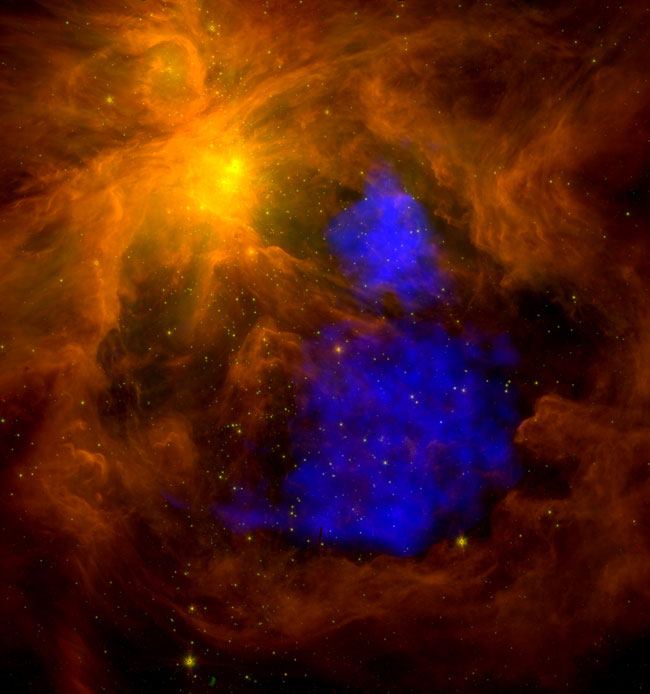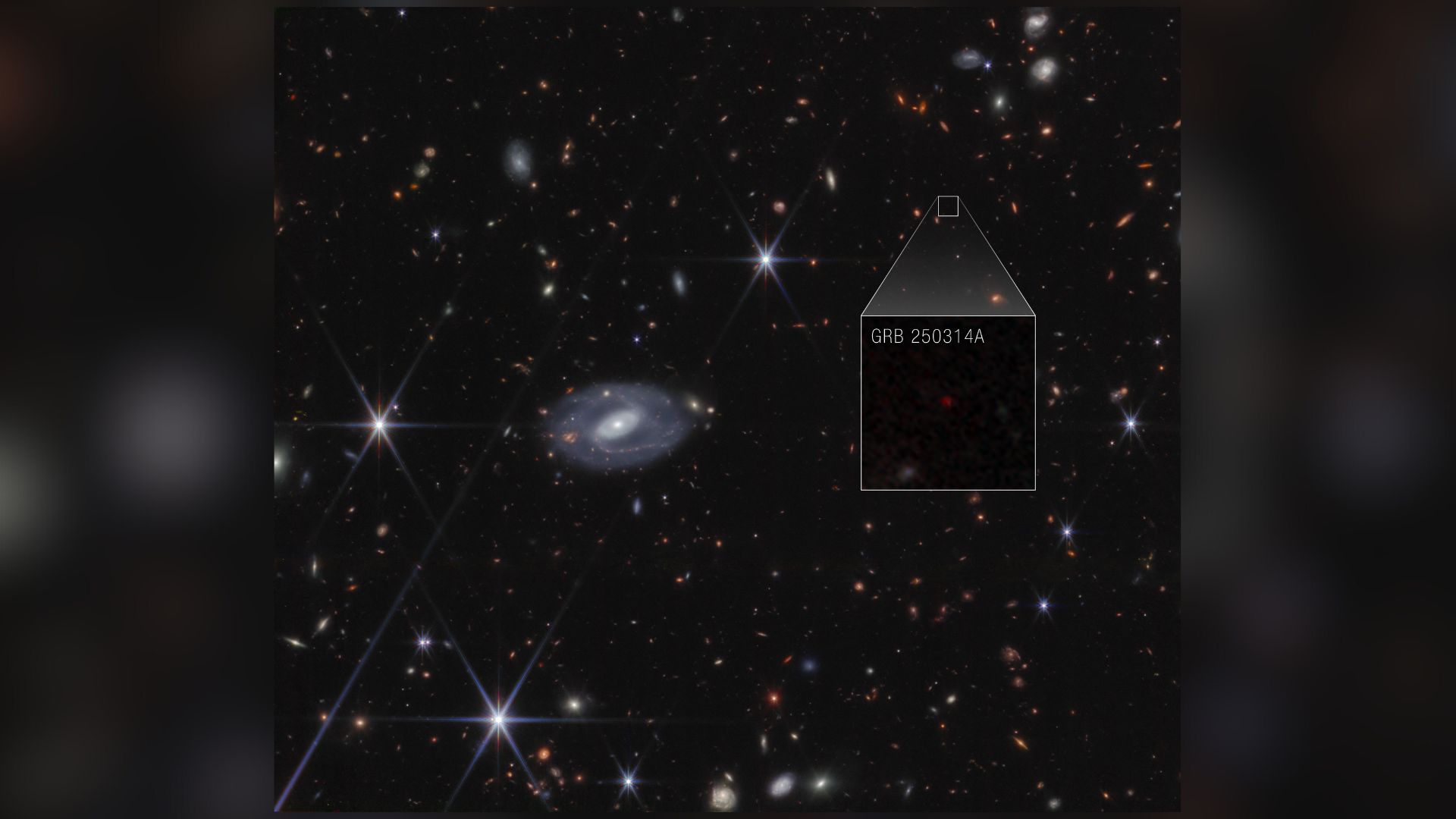Huge Stars Seen as Source of Glowing Gas

Stars in our galaxy may often pumpout waves of million-degree gas that make surrounding nebulas glow with x-rays.
These new findings could shed light into how planetarysystems form—including our own solar system, researchers said.
Astrophysicists focused on the OrionNebula, a cloud of dense and turbulent gas visible to the naked eye in thenight sky, right below the belt of the constellation Orion. Four extremely bright and massive stars, called theTrapezium, light up the nebula.
One stretch of the nebula, about 10 light-years wide,glows with x-rays. This glow apparently results from super-heated gas—some 1.7million to 2.1 million degree Celsius hot—that pervades the cloud.
Often such vast expanses ofsuper-heated gas come from exploded stars called supernovas or from largecollections of very massive stars.Now an international research team using the XMM-Newton space observatory findsthis gas seems to flow from just one bright, young, massive star in theTrapezium.
The Orion Nebula is a"stellar nursery," where thousands of new stars are being born. Thereare many stellar nurseries throughout the Milky Way that, like the OrionNebula, only host a few very massive stars. The researchers expect these x-rayglows occur in many or even all of these nurseries, meaning they "may bevery widespread across the entire galaxy,"researcher Manuel Gudel, an astrophysicist at the Swiss Federal Institute ofTechnology in Zurich, told SPACE.com.
"It is now widely believedthat the sun was born in an Orion-like environment," Gudel added."Hence, every new piece of information we collect on Orion hasimplications on the early history of the solar system, and therefore on ourunderstanding of our own origins."
Breaking space news, the latest updates on rocket launches, skywatching events and more!
The researchers now hope tounderstand how these x-ray glows might alter the environments in whichplanetary systems form, possibly even influencing the very chemistry of worlds,Gudel said.
Gudel and his colleagues reportedtheir findings online Nov. 29 in the journal Science.
- Image Gallery: Nebulas
- The Most Amazing Galactic Images Ever
- The Strangest Things in Space

Charles Q. Choi is a contributing writer for Space.com and Live Science. He covers all things human origins and astronomy as well as physics, animals and general science topics. Charles has a Master of Arts degree from the University of Missouri-Columbia, School of Journalism and a Bachelor of Arts degree from the University of South Florida. Charles has visited every continent on Earth, drinking rancid yak butter tea in Lhasa, snorkeling with sea lions in the Galapagos and even climbing an iceberg in Antarctica. Visit him at http://www.sciwriter.us
